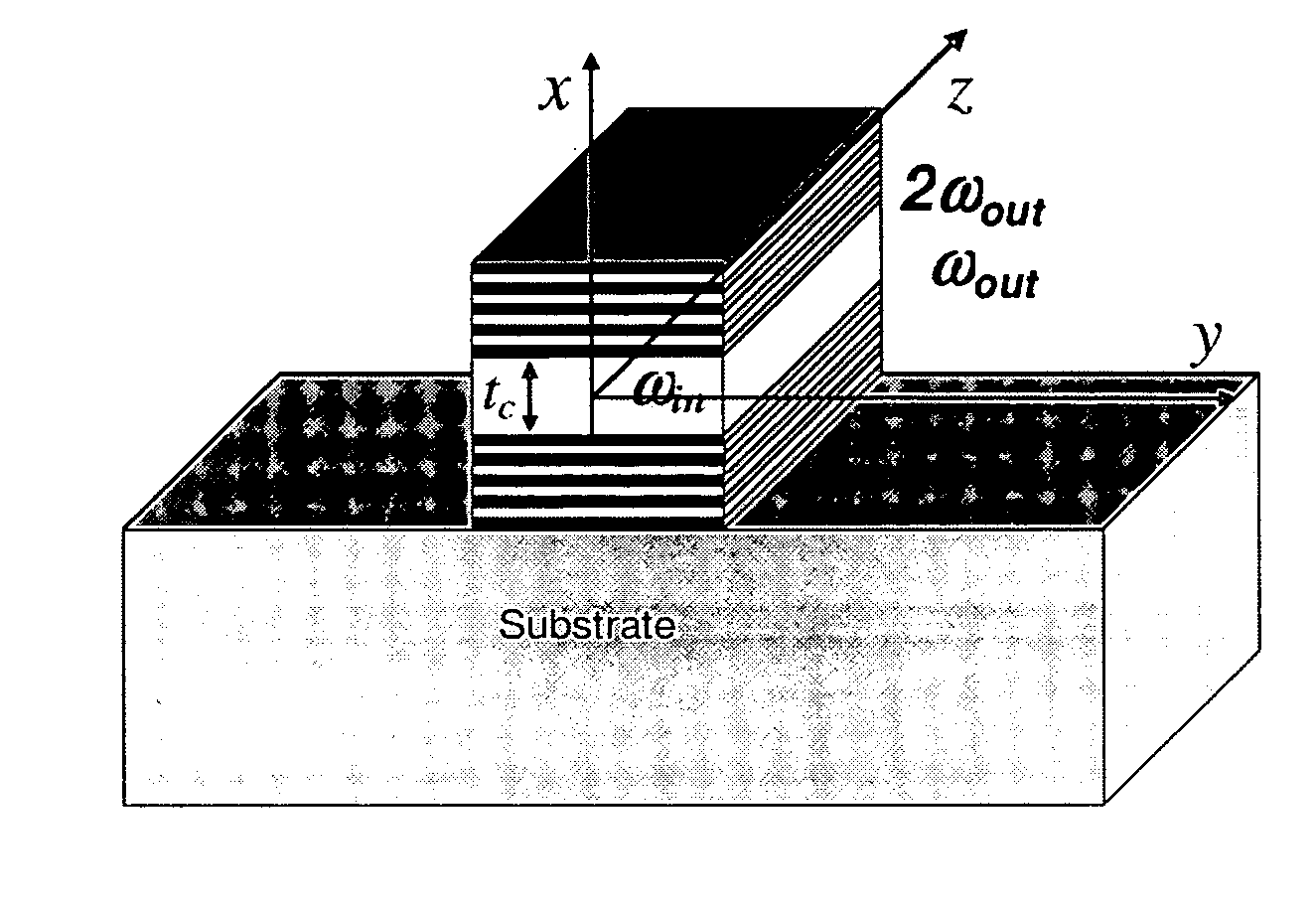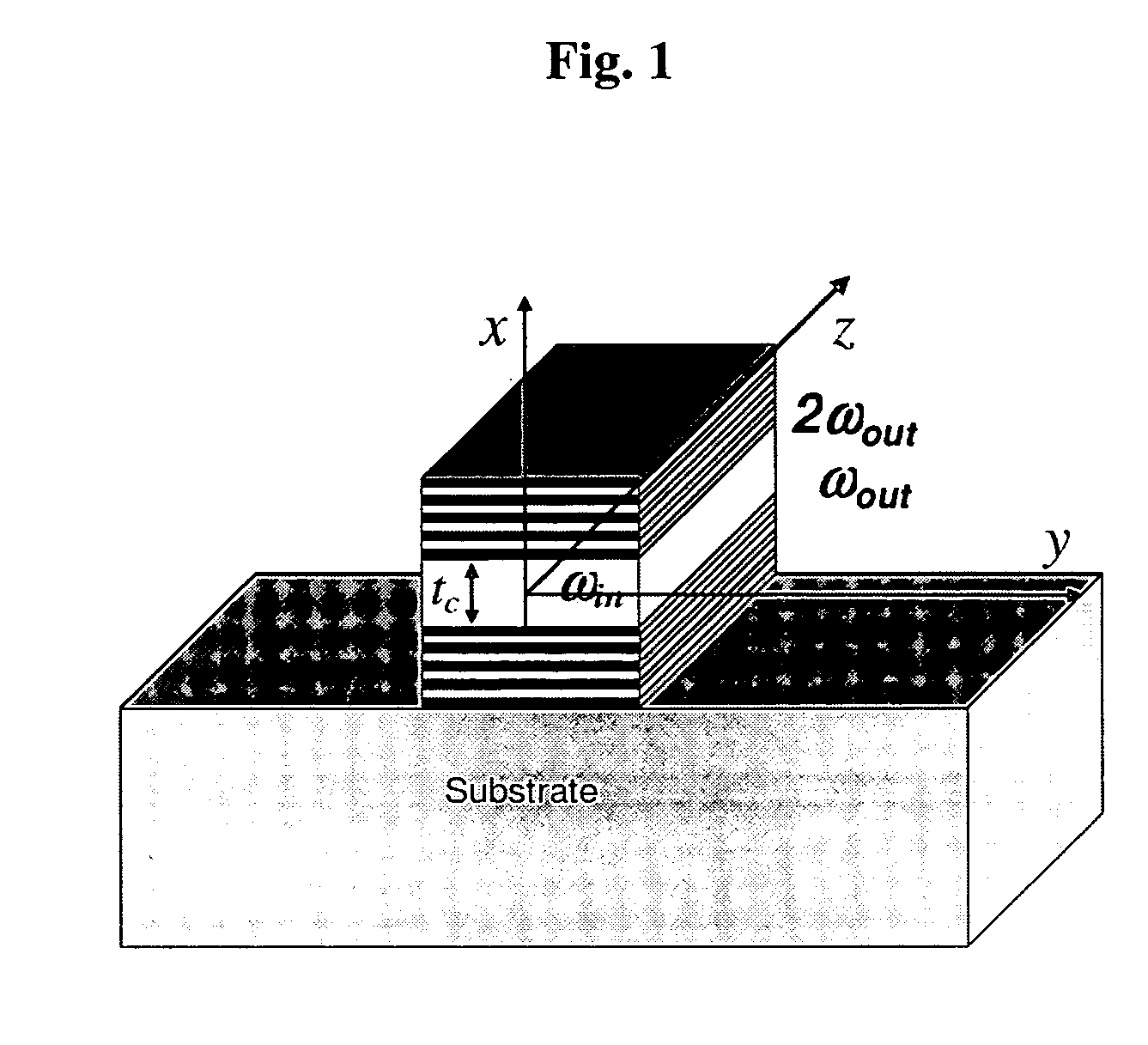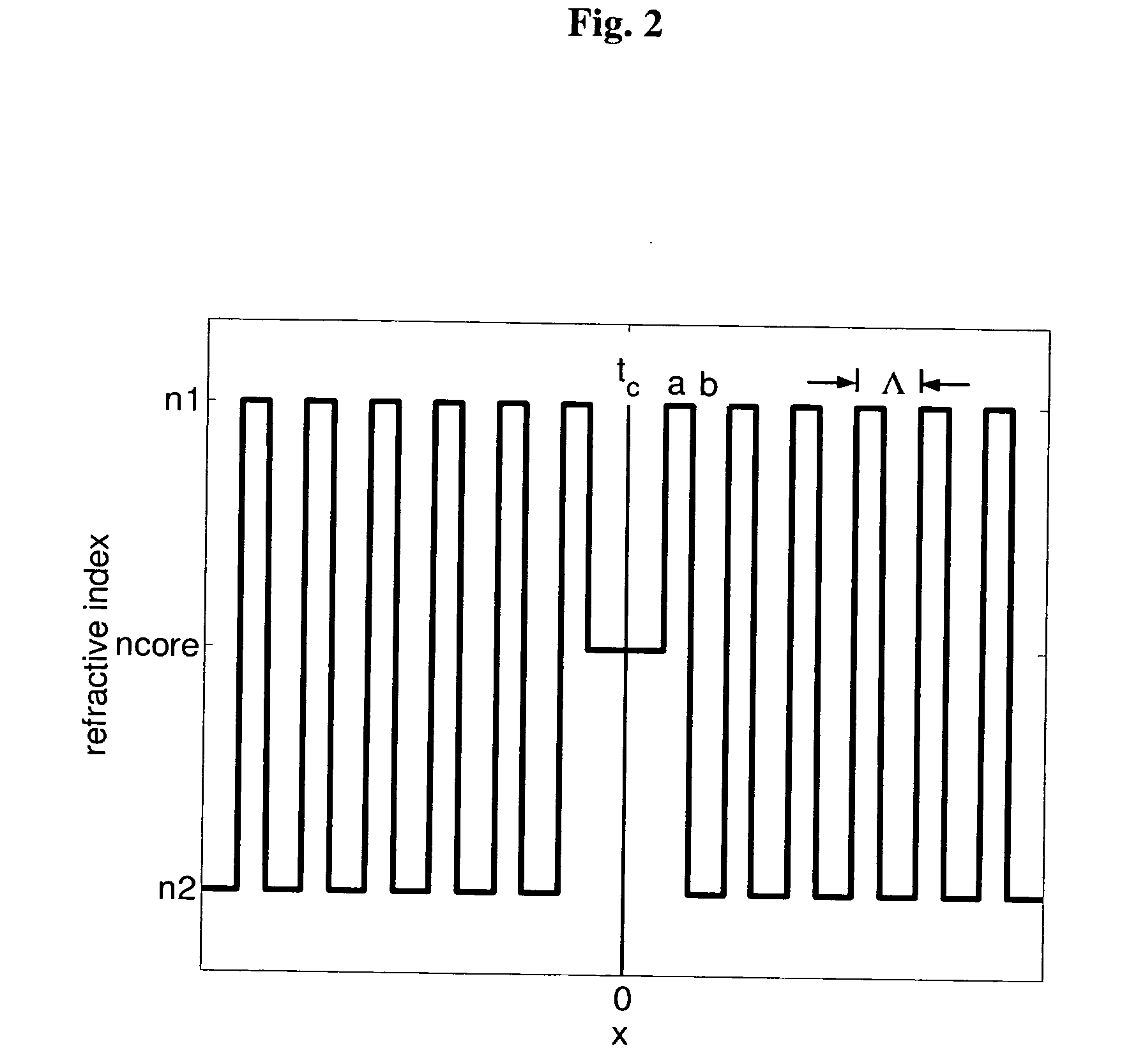Apparatus and methods for achieving phase-matching using a waveguide
a waveguide and apparatus technology, applied in the field of apparatus and methods for achieving phase-matching using a waveguide, can solve the problems of high insertion loss, ineffective availability, performance and cost effectiveness of such photonic components, and lack of efficient, compact and tunable nonlinear elements. the effect of reducing insertion loss
- Summary
- Abstract
- Description
- Claims
- Application Information
AI Technical Summary
Benefits of technology
Problems solved by technology
Method used
Image
Examples
Embodiment Construction
[0033] In the following description, numerous specific details are set forth to provide a thorough understanding of the invention. These details were taken from References 1 and 2 where the idea of the invention has been analyzed and verified in details. However, it is understood that the invention may be practiced without these specific details. In other instances, well-known structures and techniques have not been described or shown detail in order not to obscure the invention.
General Attributes of Waveguide of the Present Invention
[0034] Under this heading, the Bragg reflection waveguide (BRW) of the present invention and the solution of its quasi-bound modes is described, with particular attention to the special case of a transverse quarter-wave cladding.
[0035] The Bragg Reflection Waveguide (BRW) is known per se and was analyzed by Yariv, Yeh, and Hong [References 3, 4]. While the more common TIR waveguide operates through total internal reflection between a high-index core...
PUM
 Login to View More
Login to View More Abstract
Description
Claims
Application Information
 Login to View More
Login to View More - R&D
- Intellectual Property
- Life Sciences
- Materials
- Tech Scout
- Unparalleled Data Quality
- Higher Quality Content
- 60% Fewer Hallucinations
Browse by: Latest US Patents, China's latest patents, Technical Efficacy Thesaurus, Application Domain, Technology Topic, Popular Technical Reports.
© 2025 PatSnap. All rights reserved.Legal|Privacy policy|Modern Slavery Act Transparency Statement|Sitemap|About US| Contact US: help@patsnap.com



